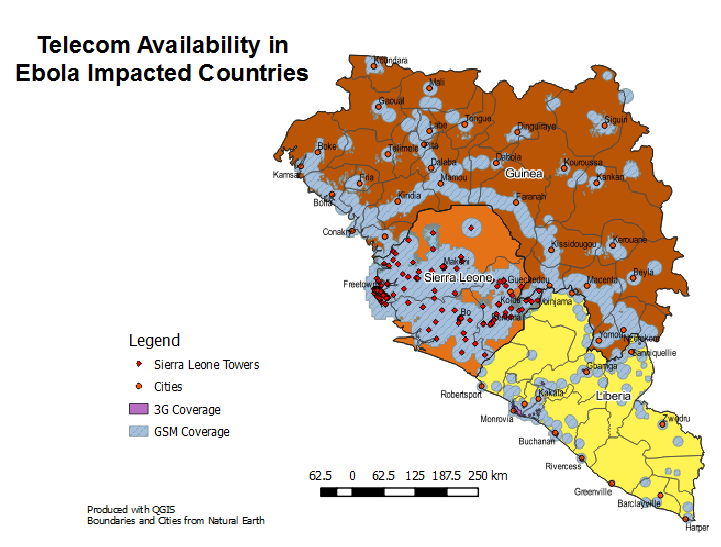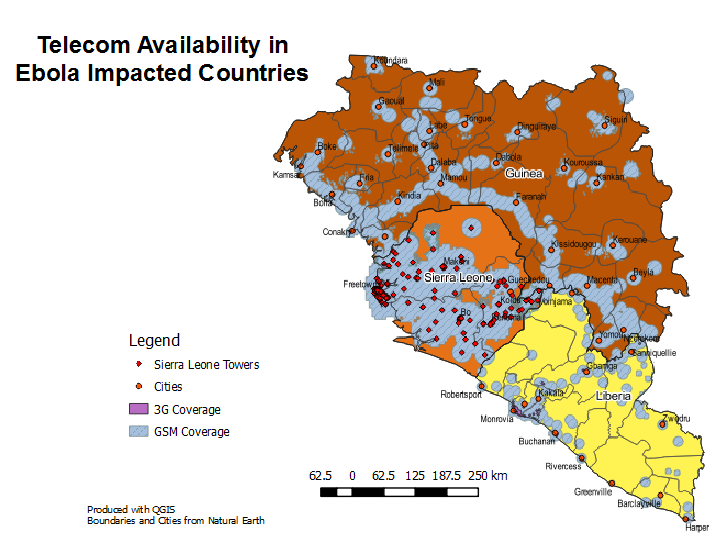
Apr 10, 2016
The primary aim of this project was to help responding organizations and the personnel who plan and coordinate response activities make data-driven decisions about how to best respond.
The topics the team helped address include:
1. Understanding telecommunication connectivity needs, using data from surveys of responding organizations:
- Mobile connectivity strength in West African countries
- Types and method of collecting data and data transfer
- Staffing for responding organizations to give operational picture of the anticipated demand for connectivity.
2. Tracking BGAN (Broadband Global Area Network, a global satellite network for internet and voice communications) usage and activity in Ebola-affected areas.
3. Understanding the needs for and the impact of the Ebola-response resources, using data from the Humanitarian Data Exchange (HDX). HDX is an open repository of data collected from various sources and systems, implemented through an initiative of the United Nations and currently in the process of building up. The HDX data sets were combined with other data sets to analyze the following:
- Locations and sizes of safe-and-dignified burial teams
- Locations and activities of Ebola testing laboratories
- Locations and numbers of infected healthcare workers
- Volume (in recipients and amount) of food aid being received through the World Food Programme
- Locations of internet, radio, and voice communication services
- Primary and secondary education establishments to help understand which schools need the most help.
The graphs below illustrate our findings:

In addition to NetHope, team members worked with resources from the United Nations and Tableau to produce visualizations that were both effective and useful for operations. We had an important contribution in helping crisis response organizations make data-driven decisions.
